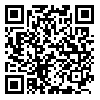BibTeX | RIS | EndNote | Medlars | ProCite | Reference Manager | RefWorks
Send citation to:
URL: http://ijme.tums.ac.ir/article-1-148-en.html
Human cloning is one of the most controversial issues in ethics. This paper, with analytic-descriptive method, deals with Kant&aposs principle of ends and permission or prohibition of human cloning from its point of view. According to Kant&aposs principle of ends, any action in which humanity is taken as a means, not as an end, is prohibited. There are different interpretations of taking humanity as an end: to do without one&aposs awareness anything, to respect human&aposs freedom and autonomy, to help his happiness and to respect the humanity of others. According to the Kant&aposs principle of ends our review shows any human cloning in which human being is taken as a means to other ends, is prohibited. Thus human cloning in order to produce many groups of humans with the same genetics and using them in war or excruciating work, to reproduce geniuses, politicians, soldiers, scientists..., produce children with ideal genotype and to replace recently died family, is prohibited. But human cloning in which humanity of produced people is taken as an end is permissible, such as cloning at the purpose of human happiness without limiting their freedom and autonomy, therapeutic cloning for producing tissue and transplant organs, for helping infertile couples and for giving birth to healthy newborns without genetic disorders.
Accepted: 2017/09/27 | Published: 2017/09/27
| Rights and permissions | |
 |
This work is licensed under a Creative Commons Attribution-NonCommercial 4.0 International License. |





